 Nymphargus luteopunctatus
Nymphargus luteopunctatus
This species is found in Munchique National Natural Park. It is a very rare frog classified as Endangered by the International Union for Conservation of Nature (IUCN). Its name refers to the yellow spots—resembling ocelli (eye-like markings)—that cover its body. It lives near streams, where it reproduces, and is also found in well-preserved forests.
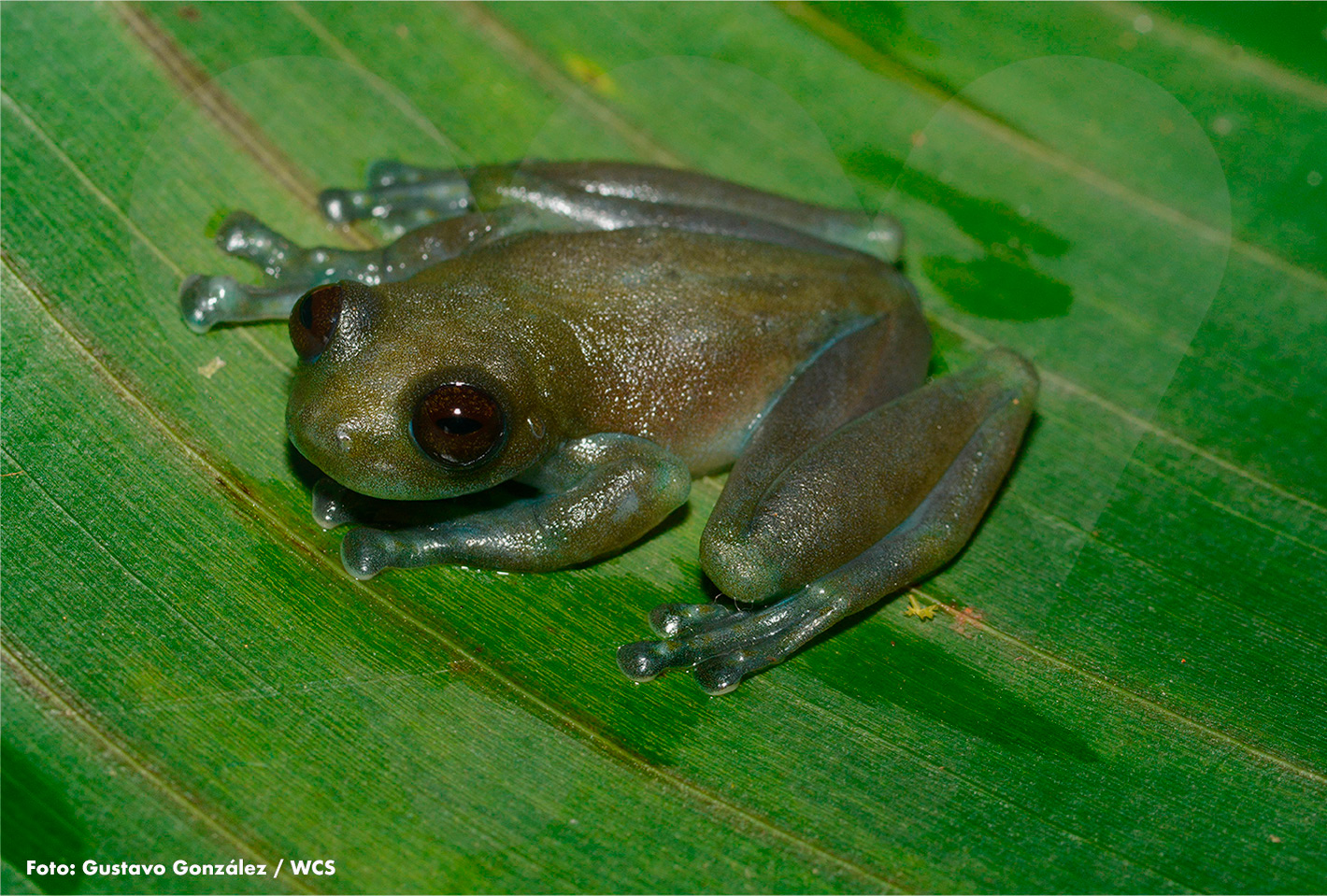 Sachatamia orejuela
Sachatamia orejuela
This species can be found in Munchique and Farallones de Cali National Natural Parks, in the departments of Cauca and Valle del Cauca, respectively. It inhabits well-preserved forests and is also found among rocky riverbeds, where it slips into stone crevices. From these hiding spots, it calls actively—either to attract females or to signal its presence to other males.
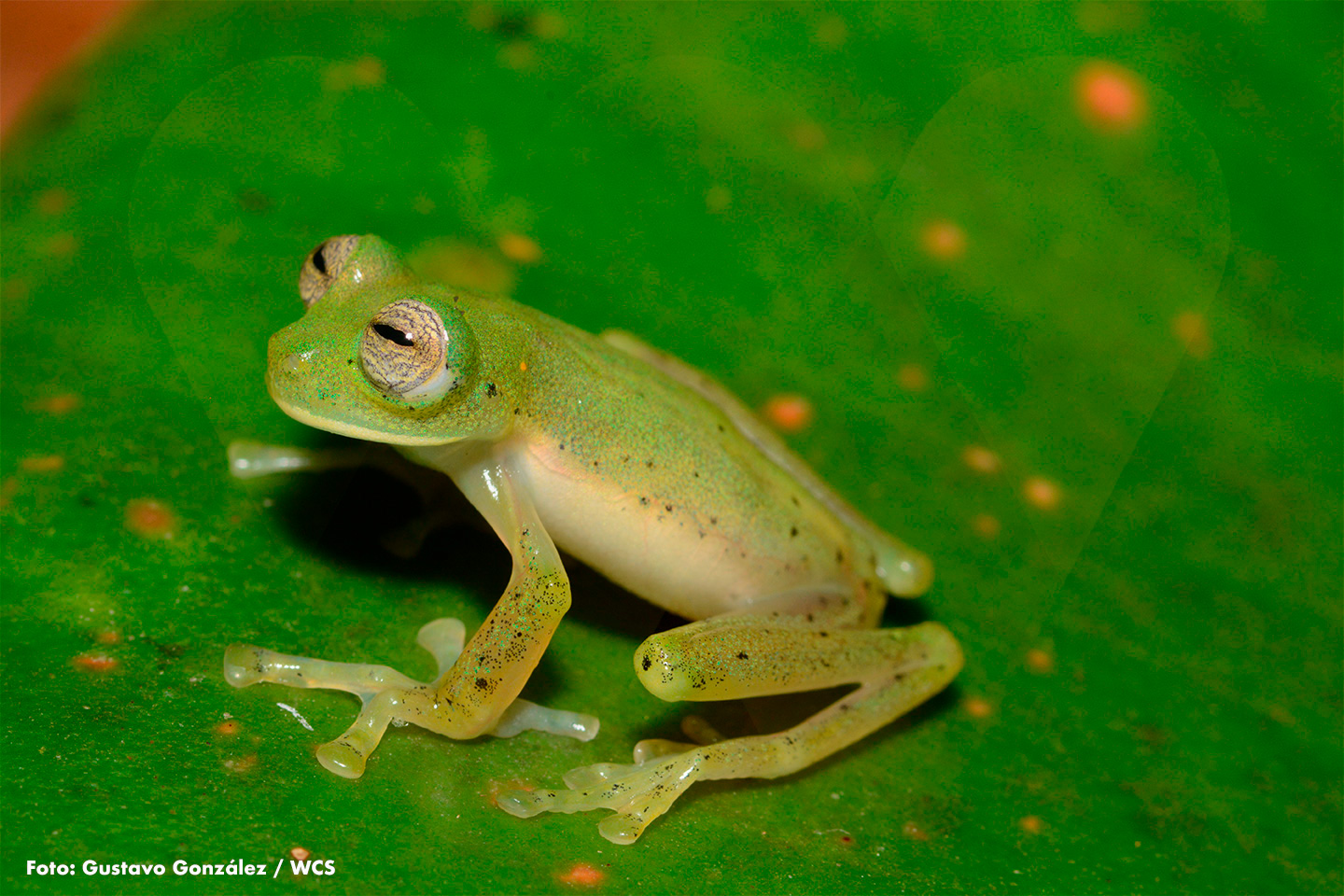 Nymphargus grifithsi
Nymphargus grifithsi
This species takes refuge in well-preserved forests and along small streams, where it can climb into the forest canopy and call actively to attract females. Little is known about its ecology. It is typically found in Munchique National Natural Park (Cauca), Tatamá National Natural Park (Chocó, Risaralda, Valle del Cauca), and Farallones de Cali National Natural Park (Valle del Cauca).
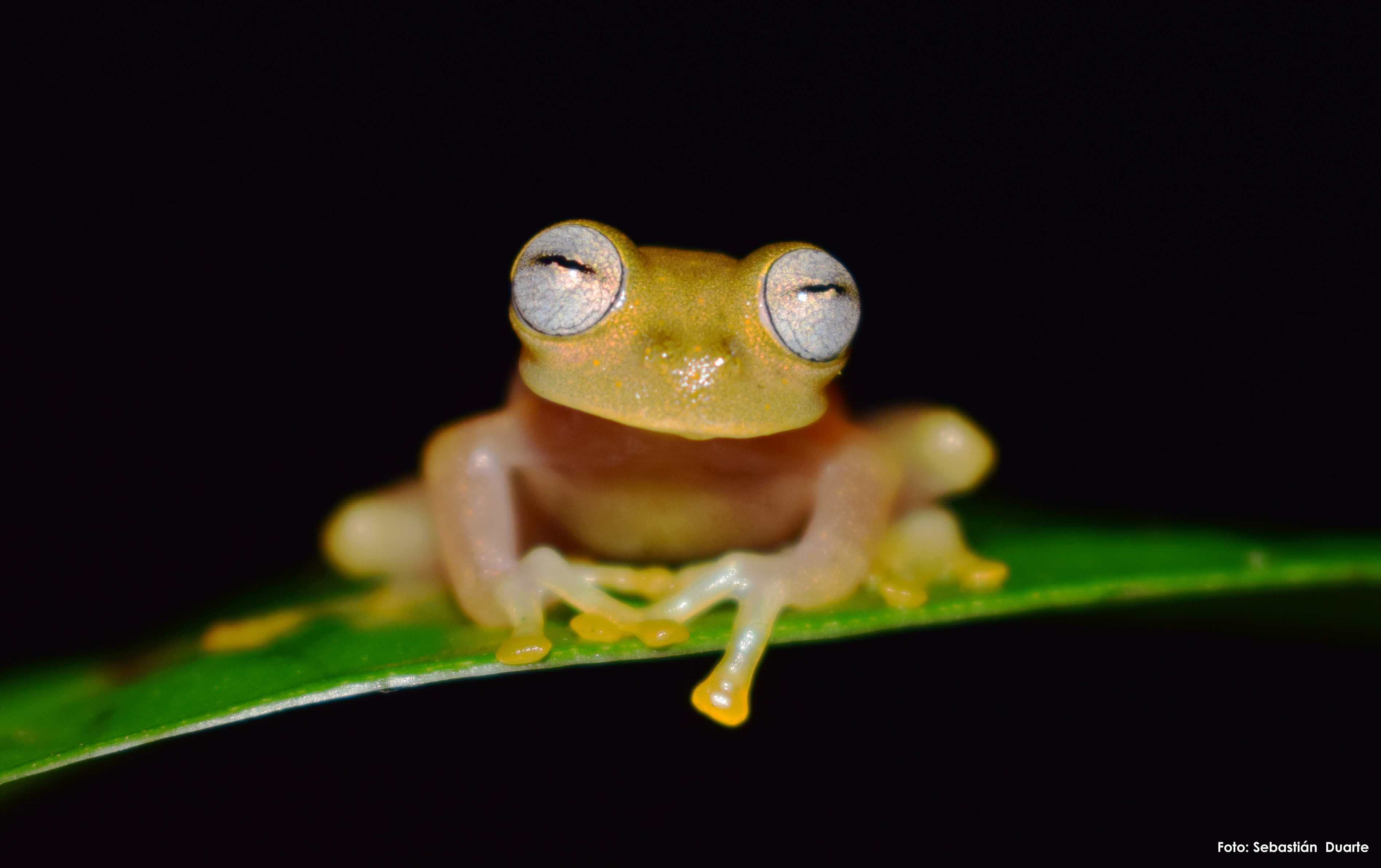 Nymphargus rosada
Nymphargus rosada
This is a relatively common species, pink or orange in color. However, it has been classified as Vulnerable by the International Union for Conservation of Nature (IUCN). Its habitat is highly fragmented. It takes refuge in Selva de Florencia National Natural Park (Caldas). It often calls actively near streams to attract mates.
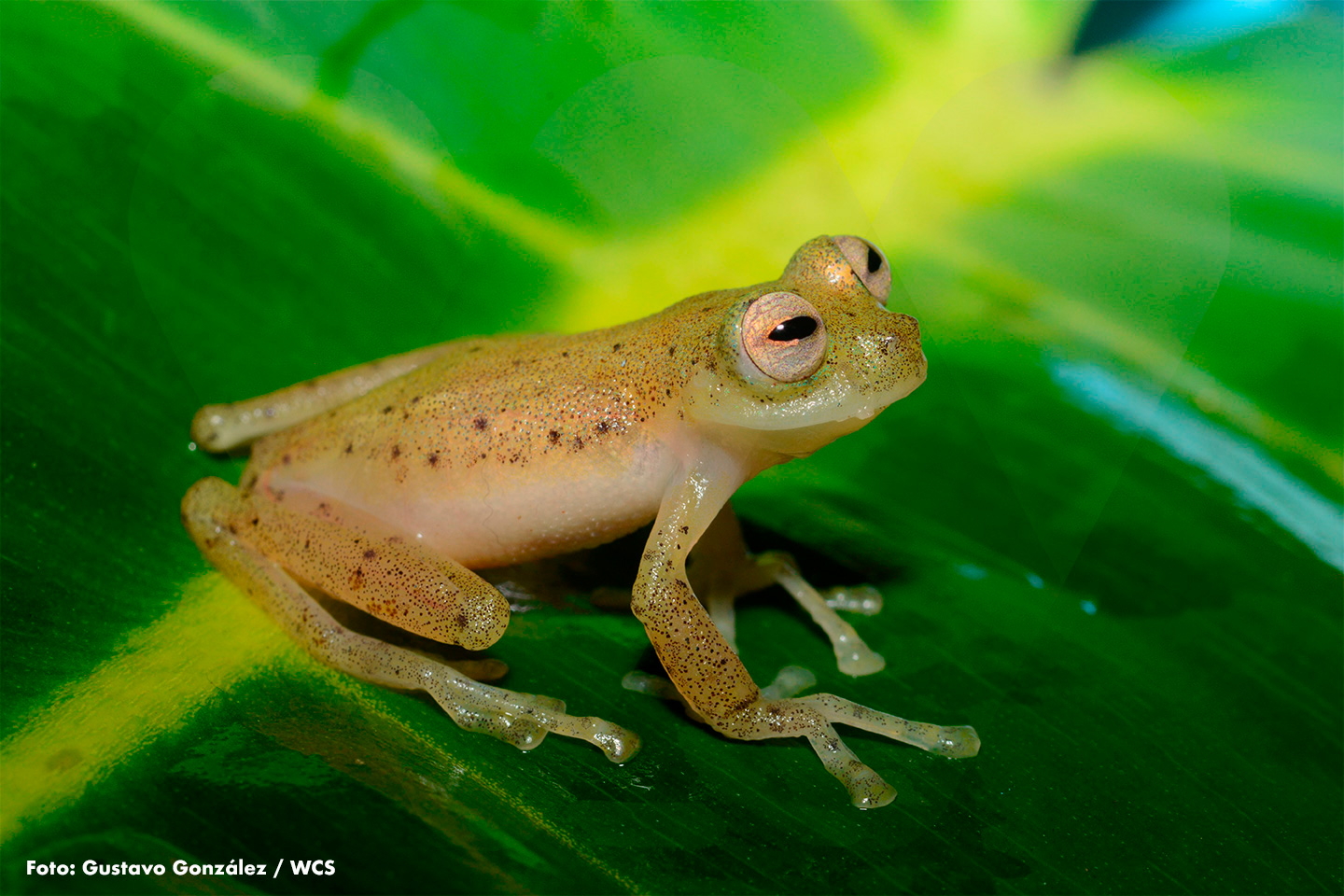 Nymphargus caucanus
Nymphargus caucanus
Its color is light olive, and it inhabits streams—where it reproduces—and well-preserved forests. According to the International Union for Conservation of Nature (IUCN), it is classified as Endangered. It is found in Munchique National Natural Park (Cauca).
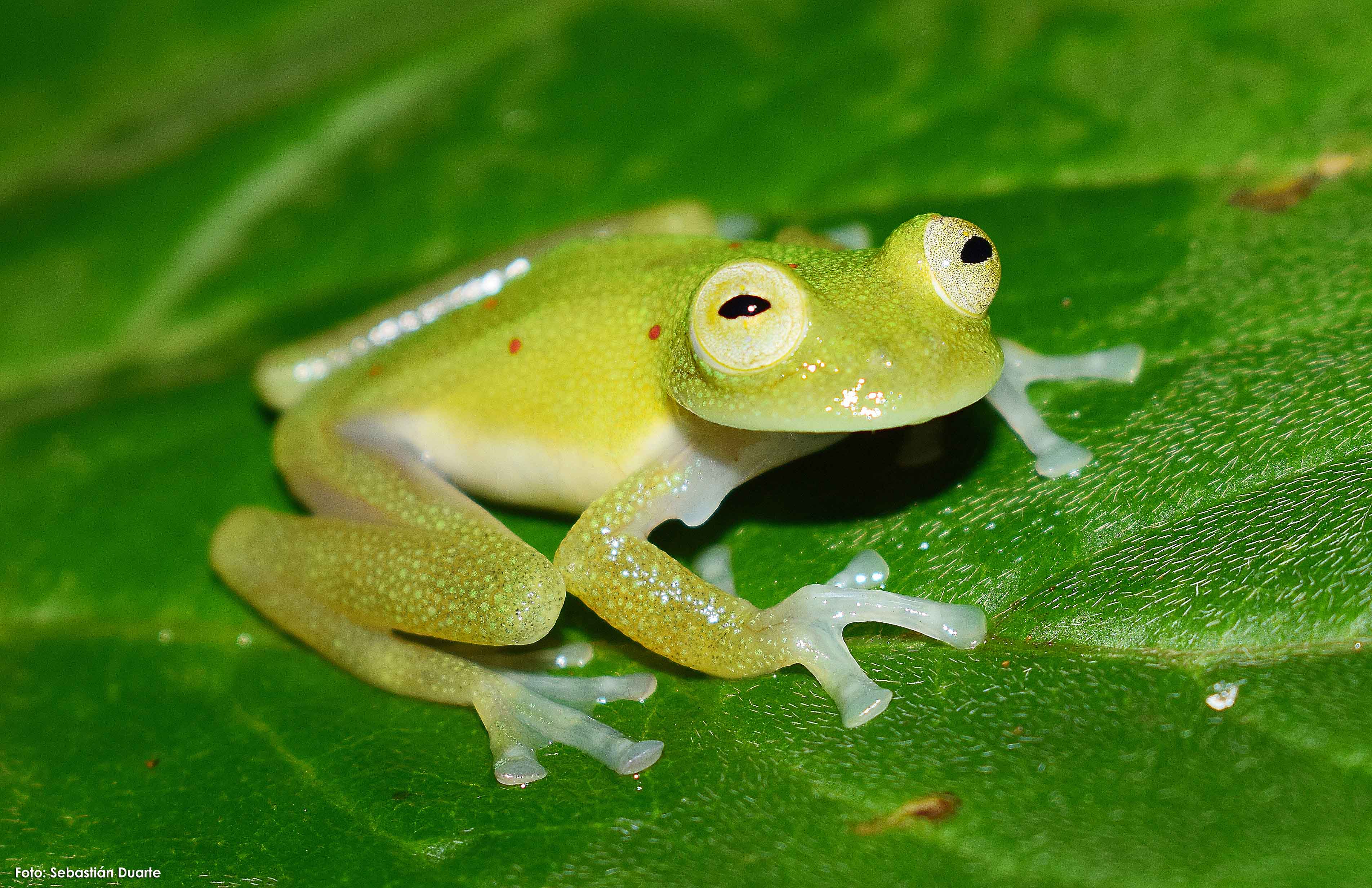 Nymphargus grandisonae
Nymphargus grandisonae
This is a common species found between Colombia and Ecuador. It is easily identifiable by a few red spots on its back. This species can be found in disturbed areas or mature forests near water. One of its notable behaviors is that males fight for territory, using bony spines on their arms to injure their opponents during these combats.
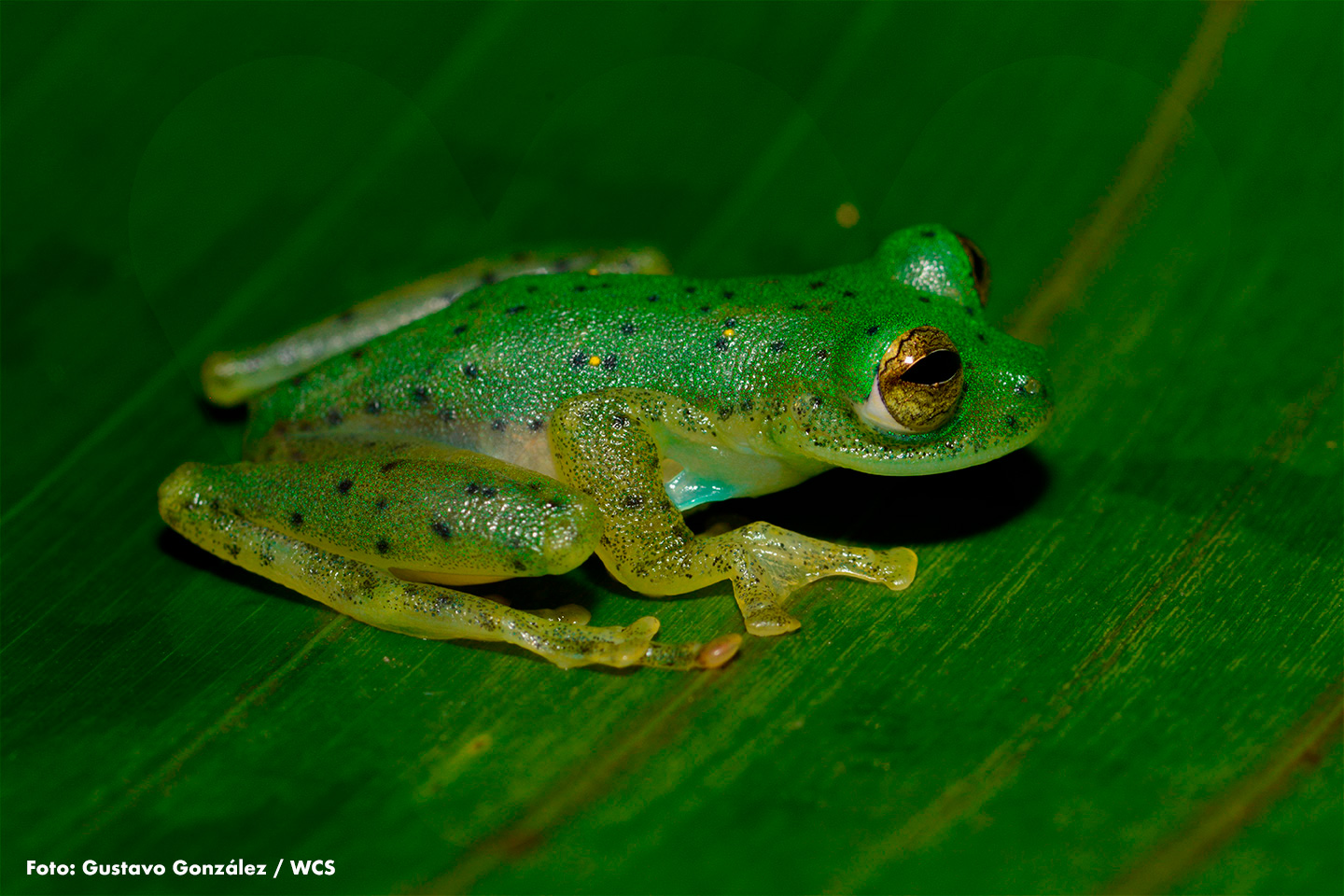 Espadarana prosoblepon
Espadarana prosoblepon
When viewed from the underside, green bones can be seen. It may have yellow or blue spots. This species is distributed across Colombia, mainly in the inter-Andean valleys and the Pacific region. Males possess a bony spine used to fight and defend their territory.
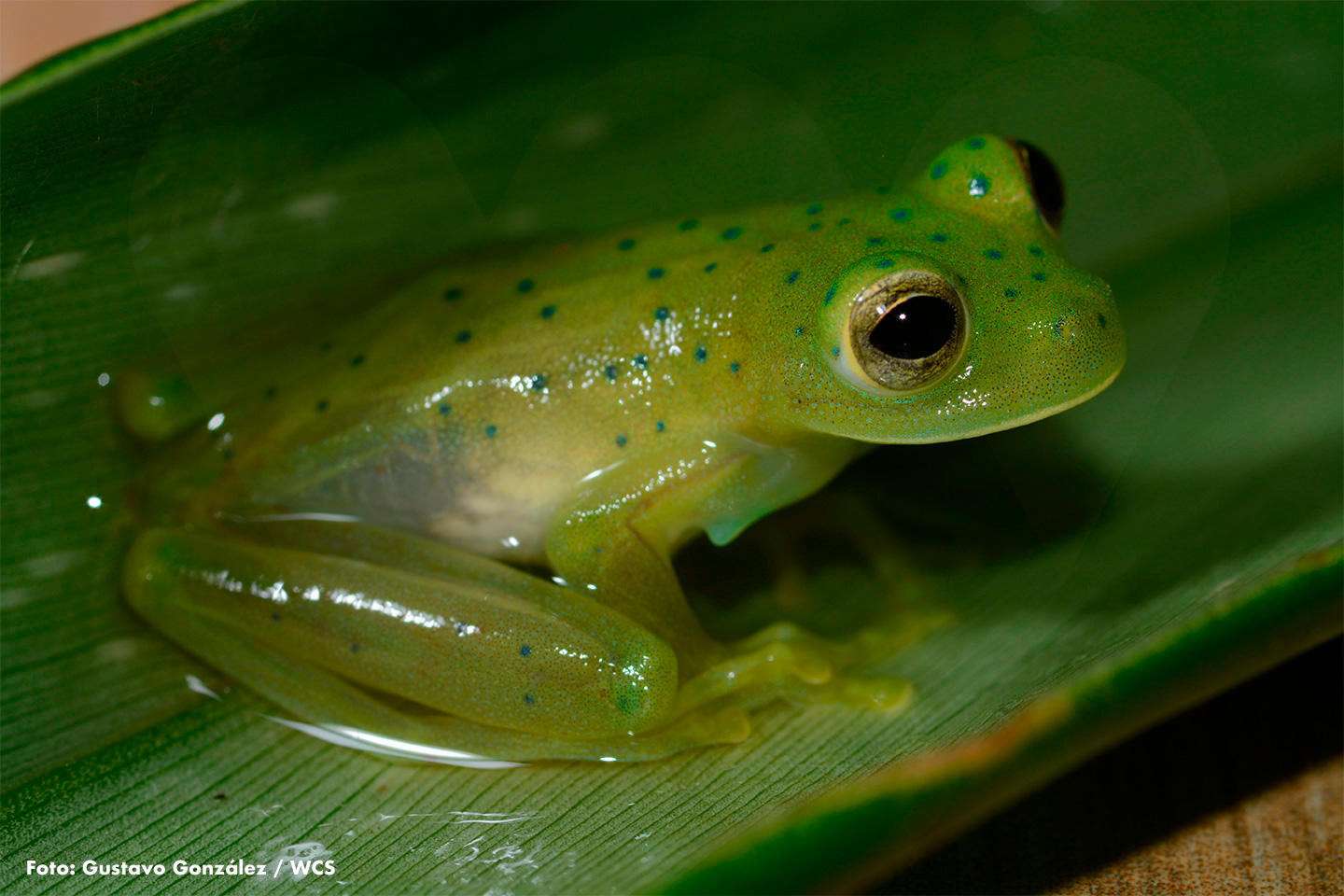 Espadarana andina
Espadarana andina
This species typically inhabits the Eastern Andes of Colombia. It has green bones and blue spots on its back. Like the previous species, males have a bony spine on their arms, which they use to fight and defend their territory. It is found in the Guanentá Alto Río Fonce Flora and Fauna Sanctuary (Boyacá and Santander).
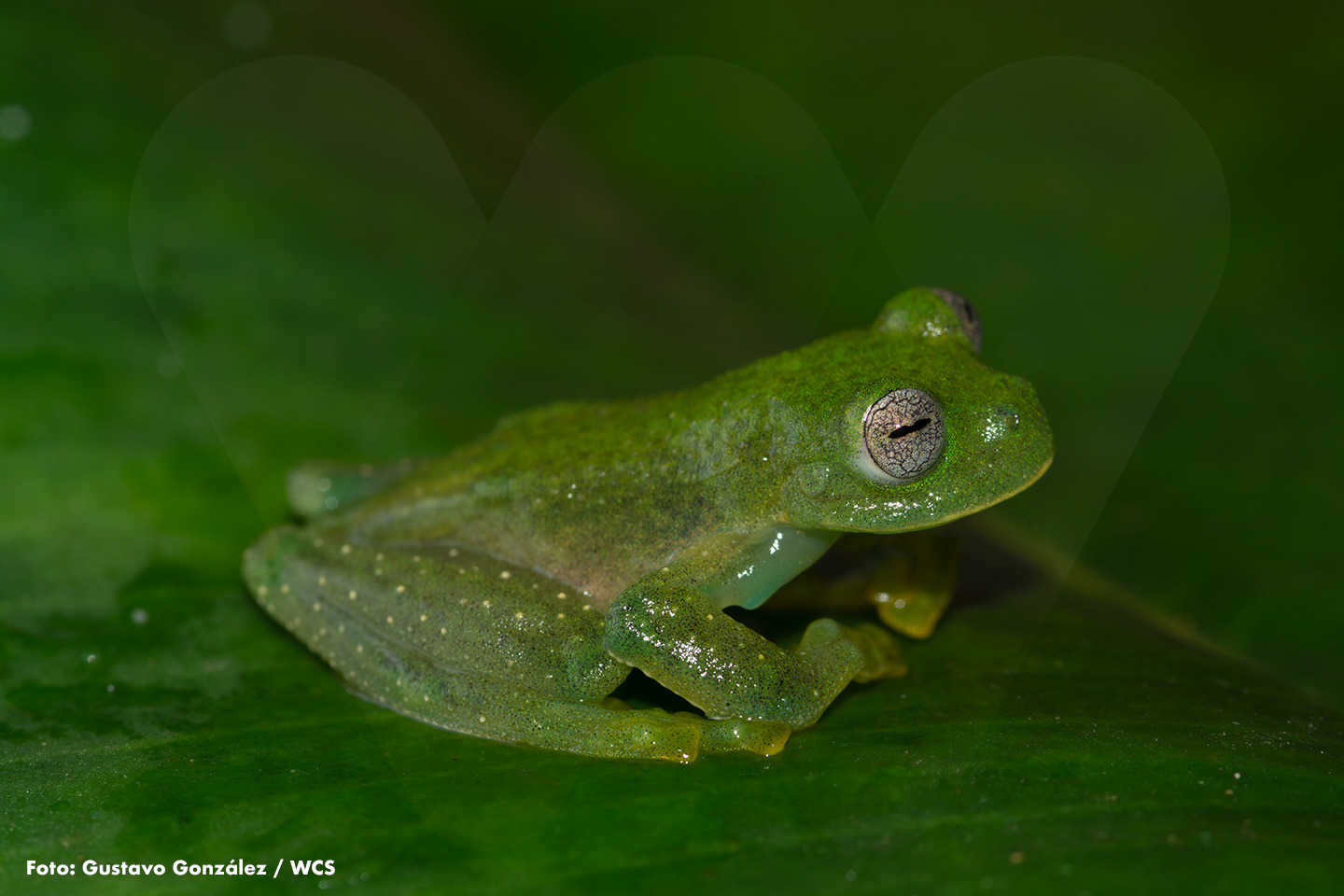 Centrolene hybrida
Centrolene hybrida
It lives on the slopes of the Eastern Andes and the foothills of the Orinoco Region, especially in Chingaza National Natural Park. It usually stays in well-preserved areas. Males have spines on their arms which they use to defend their territory. Little is known about its ecology.
 Centrolene acanthidiocephalum
Centrolene acanthidiocephalum
This species is extremely rare and can be seen in the Guanentá Alto Río Fonce Flora and Fauna Sanctuary (Boyacá-Santander). According to the International Union for Conservation of Nature (IUCN), there is insufficient data about it. Its name relates to its head, which has a shovel-like shape.
Traslated with AI support